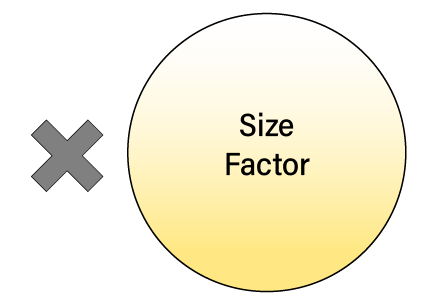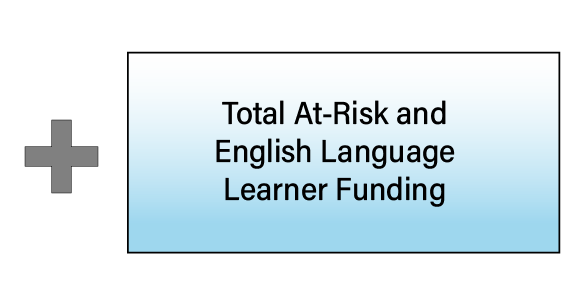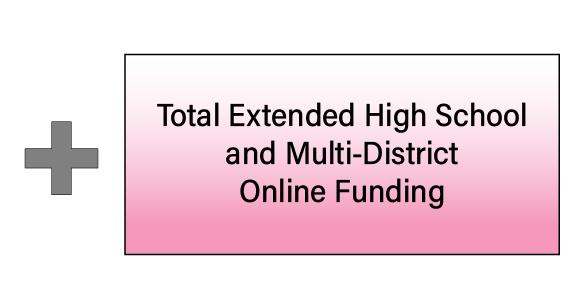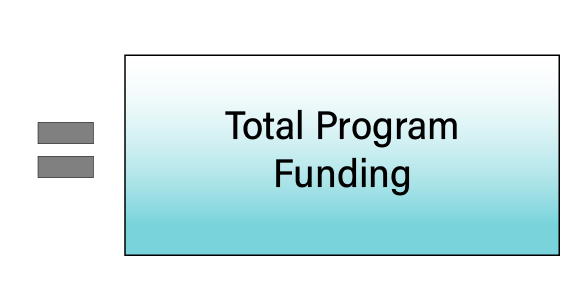You are here
Colorado Public School Finance Act
Download the PDF Version of This Page
TOTAL PROGRAM FUNDING: Expiring and New Formulas
Colorado public schools receive money from a variety of sources. However, most of the funding to Colorado's 178 school districts is provided through the state's Public School Finance Act (74% in fiscal year 2022-23).
The total amount each school district receives under the Public School Finance Act is referred to as “Total Program Funding,” which includes both state and local funding shares. State share comes from a range of state-level sources. Local share is generated through local property taxes and specific ownership taxes (vehicle ownership taxes).
Expiring and New Funding Formulas
In May 2025, the Colorado legislature passed a major update to the School Finance Act, HB 25-1320, implementing the new school funding formula enacted in HB 24-1448. The new funding formula will be phased in from the 2025-26 budget year through the 2030-31 budget year.
- The new formula will fully replace the expiring formula in the 2031-32 budget year.
- The expiring formula will still be used through the 2030-31 budget year to calculate funding for districts who would receive less favorable funding under the new formula(s) set forth in HB 25-1320.
- CDE's Current FY District Funding Calculation Worksheet for the 2025-26 budget year provides district-by-district calculation of funding under the expiring and new formulas, with percentage based on the 2025-26budget year and base per pupil rates.
This explainer presents a broad overview of the school funding structure; however, there are many additional calculations and considerations. For example:
- Each district has different factors based on individual demographics and characteristics.
- Each formula element (especially for the expiring formula) may have additional sub-calculations behind it; many of these are related to how students are counted for that portion of funding. For a full breakdown, please see the District Funding Calculation Worksheet.
- Certain formula elements may include sub-calculations set outside the formula itself (for example, the cost of living is recalculated by the state legislature every two years).
- Pupil count for each category in which pupils are counted can be complex; for more information and resources on pupil count, please refer to the CDE School Auditing Office's web page on Pupil Count.
Total Program Funding: Expiring Formula
Each district's Total Program Funding under the expiring formula includes:
- Statewide base per pupil funding (set by the legislature each year), with additional adjustment factors for cost of living, personnel costs and district size;
- Additional funding for:
- At-Risk pupils
- English Language Learner (ELL) pupils
- Extended High School pupils
- Multi-District Online School pupils
For 2025-2026, the statewide base per pupil funding rates are:
- Base per pupil rate: $8,691.80
- Multi-District Online School per pupil rate: $10,480.00
- Extended High School (per pupil rates vary by program):
- TREP: $10,480.00
- P-Tech: $10,480.00
- ASCENT: $7,104.00
Expiring Formula, Step 1: Obtain starting pupil count for formula:
The first stage in formula calculation is to obtain the starting pupil count for calculations; this initial set of calculations is essentially the same in the expiring and new formulas. Because Extended High School and Multi-District Online School pupils are funded at separate, set rates, they are subtracted from the total number of pupils in the district at this step.
Note: online students attending a single-district program are included in the same pupil count as students attending that district's brick-and-mortar schools, not in the Multi District Online School pupil count.
Expiring Formula, Step 2: Calculate Base District Funding
The adjusted pupil count is multiplied by the statewide base per pupil funding to obtain the base district funding amount.
Expiring Formula, Step 3: Apply Cost-of-Living Factor to Base District Funding
Cost of living varies by district and affects the district's hiring power; this factor is applied only to the percentage of base district funding the district will spend on personnel costs (salaries and benefits).
Expiring Formula, Step 4: Apply Size Factor
Districts with fewer students generally have less purchasing power than those with more students; the size factor helps equalize this imbalance between districts; it is applied to the total from the previous equation.
Expiring Formula, Steps 5 and 6: Add At-Risk and English Language Learner Funding
Each district has a unique count of students considered At-Risk and students who are English Language Learners. This is one of the funding areas that involves sub-calculations under the expiring formula. Broadly speaking, the additional funding comprises:
- District's at-risk count times 12 percent of district's preliminary per pupil funding
- A potential premium of .30 of a percentage point for each percentage point by which the district's at-risk percentage exceeds the statewide average at-risk percentage (with a cap of 18 percentage points, for a total at-risk cap of 30 percent)
- District's English Language Learner count times 8 percent of district's preliminary per pupil funding
Expiring Formula, Steps 7 and 8: Add Extended High School and Online Funding
Additional funding is calculated for Extended High School pupils based on how many pupils in the district are enrolled in each of the various Extended High School programs available in Colorado (ASCENT, TREP and P-Tech). Each program has a separate per pupil rate, as determined by the legislature annually.
Finally, funding is added at the statewide multi-district online per pupil rate based on the district's count of Multi-District Online School pupils.
Expiring Formula, Final Calculations: Total Program Funding and Per Pupil Funding
The components above make up the district's Total Program Funding amount, sometimes referred to as total formula funding. This amount can be divided by the funded pupil count to obtain a per pupil funding amount for the district, sometimes referred to as per pupil revenue (PPR).
Total Program Funding: New Formula
The new funding formula:
- Adds funding for special education
- Adds a locale factor (intended to help address disparities between urban, suburban, rural and remote districts)
- Incorporates some changes in the way pupils are counted for funding purposes
- Changes the stage at which the adjustment factor amounts are calculated
- Is simpler to calculate than the old formula (the underlying calculations are more straightforward, and the calculated results from all steps are simply added up to arrive at Total Program
These changes are generally intended to help make funding more transparent and equitable across the state and direct funds to students most in need.
New Formula, Step 1: Calculate Foundation Funding
The first step in the new formula is to calculate foundation funding. As in the expiring formula's “base district funding” calculation, foundation funding is the district's funded pupil count, excluding the district's Extended High School pupil enrollment and the district's Multi-District Online School pupil enrollment, multiplied by the statewide base per pupil rate.
Students in a single-district online program are counted along with students attending the district's brick-and-mortar schools, so are not included in the Multi-District Online funding count.
New Formula, Step 2: Add At-Risk Funding
At-Risk funding is the statewide base per pupil funding times 25 percent times the district's at-risk pupil count.
For districts with fewer than 7,000 funded pupils and an at-risk percentage greater than 70 percent, the multiplier is 32 percent.
New Formula, Step 3: Add English Language Learner Funding
English Language Learner funding is the statewide base per pupil rate times 25 percent times the district's English Language Learner count.
New Formula, Step 4: Add Special Education Funding
Special Education funding is the statewide base per pupil rate times 25 percent times the district's Special Education count.
New Formula, Step 5: Add Cost of Living Factor Funding
In the new formula, the cost of living factor is expressed as a percentage derived from the district's rebased cost of living (that district's cost of living compared to the district with the lowest cost of living in the state); for example, a district with a rebased cost of living of 1.208 would have a cost of living factor of 20.8 percent. The cost of living factor is capped at 23 percent.
Cost of Living Factor funding is the district's foundation funding amount times the district's cost of living factor.
New Formula, Step 6: Add Locale Factor Funding
Each district receives a locale designation determined by its geographical location, population density and proximity to towns, other campuses, etc.; this is based on the National Center for Education Statistics (NCES) locale classification system.
Districts with an NCES locale designation of Rural Remote or Town Remote receive an additional $100,000.00 in Cost of Living funding.
Locale Factor funding is the district's Foundation Funding times the district's Locale Factor.
New Formula, Step 7: Add Size Factor Funding
Size Factor funding is the district’s pupil enrollment excluding multidistrict online students, multiplied by the statewide base per pupil rate times the district’s size factor.
Because the size factor is intended to provide more funding for smaller districts to help compensate for their reduced purchasing power relative to larger districts, this funding is provided only to districts with 6500 or fewer pupils.
New Formula, Step 8: Add Extended High School Funding
Extended High School (EHS) funding is the district's Extended High School pupil count (by program) times the per pupil rate for each of those respective programs.
New Formula, Step 9: Add Multi-District Online School Funding
Multi-District Online funding is the district's Multi-District Online School pupil count times the statewide online per pupil rate.
New Formula: Final Calculations: Total Program Funding and Per Pupil Funding
The above results are added together to arrive at the district's Total Program Funding amount. A district's Total Program can be divided by their funded pupil count to arrive at a per pupil rate for that district.
New Formula Phase-In
To lessen the financial impact of the changing formula on the State, the new school funding legislation includes a phase-in over a six year period.
For the 2025-26 budget year through the 2030-31 budget year, each district's and institute charter school's annual Total Program amount will be determined by calculating each district's and institute charter school's annual Total Program amount under the new formula and the expiring formula. During these budget years, a district's or institute charter school's annual Total Program amount will be the greater of the district's or institute charter school's calculation under the expiring formula plus a percentage of the difference between the amounts calculated new and expiring formulas, as follows:
2025-26 and 2026-27 budget years:
Each district and institute charter school's Total Program will be the greater of:
- Their Total Program amount for the 2024-25 budget year, or
- The amount calculated under the expiring formula plus a percentage of the difference between the amounts calculated under the new and expiring formulas. The percentage will be:
- 15 percent in 2025-26
- 30 percent in 2026-27
2027-28 through 2030-2031 budget years:
Each district and institute charter school's Total Program will be the greater of:
- Their Total Program amount under the expiring formula plus 1 percent of that amount, or
- The amount calculated under the expiring formula plus a percentage of the difference between the amounts calculated under the new and expiring formula. The percentage will be:
- 45 percent in 2027-28
- 60 percent in 2028-29
- 75 percent in 2029-30
- 90 percent in 2030-31
The District Funding Calculation Worksheet provides district-by-district calculation of funding under the expiring and new formulas, with figures based on the 2025-26 budget year and base per pupil rates.
If you have questions regarding this resource or Colorado public school funding, or require an alternate version of this document, please contact schoolfinance@cde.state.co.us.





















Connect With Us





